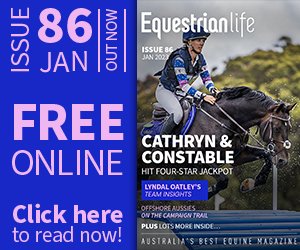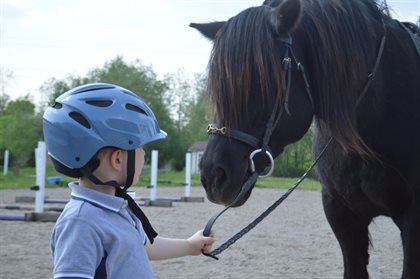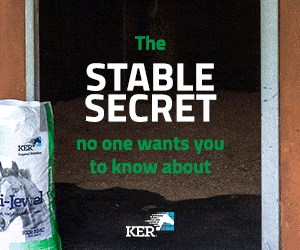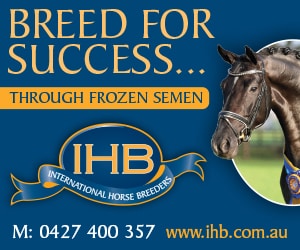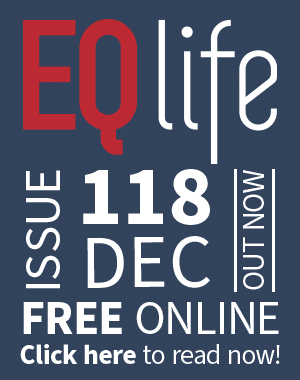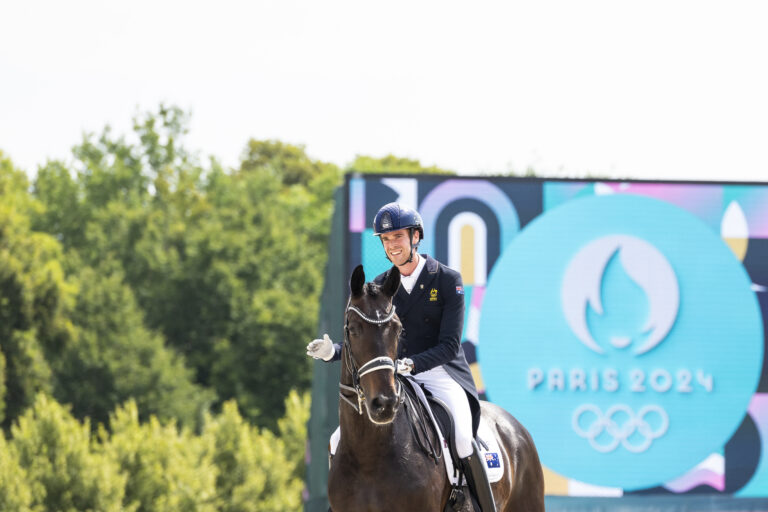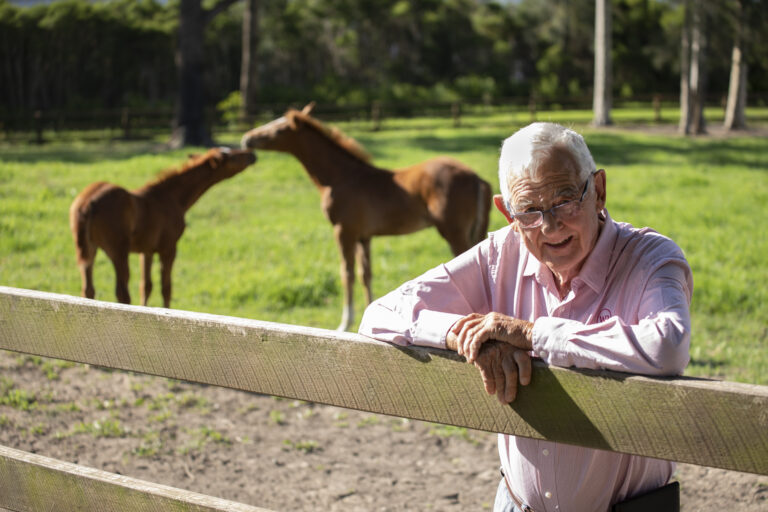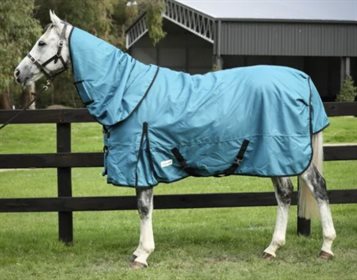By Paul Clarkson
For many novice prospective horse owners, the exercise of buying their dream equine can turn out to be a costly nightmare. That is ually because they choose the wrong horse for their needs. Paul Clarkson takes us shopping and navigates some of the hurdles.
It is common for horse trainers to receive a phone call from someone who has just purchased the newest addition to the family only to find out that it came with a few added extras they hadn’t bargained for. Buying a horse can and should be an exciting exercise. But, for many it can turn into an experience fraught with hidden and unknown complications. The changing demographic of horse ownership from a rural/farming background to the lifestyle/pleasure industry has contributed to the status quo. So, let’s explore the common mistakes people make when entering the industry and identify and develop a checklist approach when setting out to buy a horse.
I have drawn on parallels between riding a horse and driving a car. Comparing buying a car to that of buying a horse may be a useful way to approach the exercise. Unfortunately, for many new horse owners, their focus when buying a horse is clouded by aspects such as colour, presentation and other appearance factors. All these factors, coupled with the excitement of the new purchase, seem to present new owners with a range of potential mistakes.
The reality is that most people entering the horse industry should be looking for a reliable family wagon, they’re focusing on the Ferrari instead. When discussing this with horse owners on forums, there is a general feeling that there are three distinct groups that seem to get into some trouble. The first group are parents with little or no horse experience who are buying for their children. The second group are adults who drifted away from horses due to work and family commitments and are returning to the industry. Group three are adult riders who never had the opportunity when they were younger, but retained a burning desire to own a horse and now have the means to do so.
The most prone to buying mistakes appears to be the family with no experience or history with horses or other livestock behaviour, but their children are keen to ride. This is quite common in the areas where the demographic is changing rapidly from farming to lifestyle. Mums and dads that haven’t had the experience of owning a horse are lured into pleasing the kids and buying the pony that their child wants rather than the appropriate mount for their experience. There is no shortage of horse dealers and sellers as any trip around internet sights and classified ads will tell you. While many dealers have the best interest of their clients in mind, others are no so morally guided. The truth is, like any sales area, many are eager to make a quick dollar and will take advantage of the ill-informed, often misguiding their potential buyers. Dealers are in tune with aspects of the horse that the buyer may possibly be focusing on, such as aesthetic appearances, rather than the behavioural factors that are most important when first entering the industry.
When discussing this particular topic with friends and colleagues there seems to be a consensus on the consumer mentality of today compared to 25 or 30 years ago. People have been complaining about the ‘youth of the day’ since time immemorial. However, a collective observation of today’s younger generation is that the entry level into the market place is at the top end.
No longer do kids start out with a tiny black and white screen television with two channels to choose from and scratchy reception at best. Instead they are indulged with massive flat screens with up to one 150 channels to choose from.
Likewise, in my generation, there was no guarantee that when you left school you would have a car or even access to one. Today, provisional drivers are getting around in hotted up cars with high powered engines and low profile tyres. This consumer mentality and thought process is an element that is definitely alive and well within the horse industry.
I am constantly surprised at the cost some parents are prepared to go to provide their children with a horse at an entry level of riding. There could be a number of different reasons why they do this. If they think that expensive first horse comes with all the safety features then that is a forgiveable motivator. But, other reasons that come up time after time are not so easy to accept. While competition is a healthy aspect of a child’s growth and education, it runs a very distant second to that first motivator being safety and kids having fun and learning. Unfortunately there seems to be a necessity for some parents to ‘keep up with the Joness’ or even re-live their childhood through their children at elite sporting levels. This can be fuelled at times by the wrong advice from Instructors and trainers that have the belief that their own particular discipline has the moral high ground and that other disciplines have little to offer.
The second group that seems to encounter issues in the horse marketplace are people who have ridden as children or teenagers but for a variety of reasons moved away from having horse contact and ownership. Many have fond memories of those times and are now at a point where both time and finances give them the ability to enter the industry on some level again.
A common misconception for these people is that the reason they had so much fun as children on horses was due to the horse and not their own capabilities at the time. There is the belief that they had the ‘perfect’ pony and they could do anything with it. However, in many cases, further self-analysis suggests that as children, they were prepared to attempt anything due to that carefree attitude we have at a young age. But, when this group returns to horse ownership, they often discover they are more conscience of potential dangers when riding and are less inclined to relax and experiment outside of their comfort zones. Children are generally more agile than adults and they also seem to bounce a little better. Another factor that impacts on the confidence of individuals within the adult riding group is the level of responsibility that they now have in terms of work or family commitments. These were things that more than likely didn’t enter their minds when riding as children.
The third group are those who as children always wanted their own horse but geographic, financial or other circumstances didn’t allow it. Again, this group often has little or no experience with horses and are unaware of the many factors that they should be mindful of. Due to the lack of education and experience parallels can be drawn between this group and the first group discussed.
So, having identified many of the potential potholes in the horse marketplace, what is the best and safest approach for a successful experience rather than one that can leave you bitter and disoriented? The first trick is to gain some knowledge first. Another few weeks of doing some research and finding the right advice may be the most cost effective thing you can do and give an end result that does enhance your pleasure.
Some of the key points to keep in mind when setting out are:
- Slow down and don’t be in a rush
- Immerse yourself within the industry first without purchasing anything
- Talk to as many experienced people as possible
- Research and read the literature on aspects such as health, husbandry , training and cost
- If buying for a child ensure they attend horsemanship lessons as well as riding lessons
- It’s important for parents to ‘fencesit’ during these lessons and ensure that they are aware of the level of responsibility required for horse ownership
- If returning to horse ownership since childhood or adolescence, undergo some refresher lessons first
- Find out as much as you can about a horse’s history. Not just the current owner, but previous owners also
- Take someone that you trust and who is experienced with you when viewing a horse; it is important to have this person with you and that they remain impartial and are not emotionally involved in helping make a decision
- Vet checks are essential to rule out any injuries, illness and to verify age
- Have the owner handle and ride a horse first in a number of different environments
- Ensure that an experienced rider rides the horse for you if you are not a high level rider yourself
- Have a clear idea of what sort of horse and level of education you are looking for
- Horse behaviour and rider suitability should exceed any desire to purchase on aesthetic grounds
- Do not hesitate to ask to view the horse on more than one occasion
It is important to remember that horse ownership is a lifestyle choice with many responsibilities and requires an investment in both time and money. This journey can be a positive experience if buyers are mindful of the many factors involved and are aware of and employ a checklist approach.
AVOIDING THE HURDLES
Helen Burton concedes that when she embarked on a quest to buy a horse as an adult returning to riding, she made every mistake in the book. It was an expensive learning curve. Helen shares her story in order to educate others about the potential pitfalls.
When Brisbane-based Helen’s daughter decided she wanted to ride, it presented a wonderful bonding opportunity. It was a mother and daughter opportunity. Helen could regain something she’d loved during her own childhood, but with parents who could never have afforded a horse for her, she’d been content to attend a riding school until the usual demands of secondary school, career and subsequently, children, ended that pursuit. Trail riding in her 20s attracted her back.
But, like many adult riders, Helen now found herself in a position in her 40s where she did have the disposable income to kit both herself and her daughter out and they could pursue lessons. They had agistment available three minutes from home in suburban Brisbane and could access local horse and pony club activities, ‘where the adult riders outnumber the children’. “I had absolutely no idea where to start, really,” she says. “I didn’t know which websites to look at when buying a horse. I knew nothing.” Helen contacted Equestrian Life following the article in our last edition outlining the growth in adult riding. She said that in spite of reading widely on the subject and doing her research ‘buying a horse, caring for it and learning to ride again with skill and confidence are incredibly challenging’.
“There is no substitute for professional, experienced, ethical instruction and assistance,” she says. What may seem extremely basic to more experienced horse people posed huge and costly challenges for Helen. “It’s the simple things like which ‘horse for sale’ websites to look at, what breed of horse to consider, the multitude of hidden health and behavioural issues that make it so difficult,” she says.
Her first foray was a Warmblood mare listed for around $4500. The seller said it had some arthritis, but that was linked to Show Jumping, which Helen had no plans to pursue. It could be vet treated. Otherwise, it had a calm personality and seemed ‘nice’. Helen bought the horse. The arthritis returned and the horse was judged unsound within six months. Helen found herself at the end of a very expensive effort to get the mare well. “I spent a huge amount in vet fees. But, it was a very emotional experience because I really loved the horse,” she says.
Helen persisted and began searching for the right riding instructor. “I wish I had the confidence and carefree approach that I had as a child. I think I will always be nervous or at least, very careful, but that’s part and parcel of riding again in my 40s.” Helen says she ran into a situation where some instructors were unwilling to listen to what an inexperienced adult rider such as herself wanted. “I started to feel quite isolated. Just trying to deal with finding people to teach the basic groundwork. It is different when you are older. We sort of need a pony club for ‘big kids’.”
Helen’s daughter was progressing at pony club and a proud mum was preparing to take her to her first shows. It was here she ran into the next challenge. “The first time I towed the horse float, I couldn’t reverse it. I ended up driving kilometres down the road until I found a farmer in a paddock and asked him to turn it around for me. Some people may laugh at that, but nobody had taught me how to do it,” she says.
Next on the mistake list was buying cheap saddlery. “I certainly did that early on and again it is a waste of money when someone explains the difference when you have the right gear.” Helen was still searching for an instructor who understood that she, like the majority of the adult riding demographic, is a professional woman with a high-powered job and a family. Devoting two days to attending a lecture-type clinic is a hard commitment to make. “At some clinics, you don’t even get to get on the horse. Older riders are strapped for time. I just want to be able to choose ones that are transparent in what they are offering,” she says. Helen was totally prepared to pay for basic ongoing lessons. “No one said to outline my goals, what I wanted to do or achieve, so a lot of things just weren’t relevant for me,” she says. But, she was prepared to attend major horse events with a view to learning as much as she could, including travelling inter-state. Most, she says, didn’t address the basics. She enjoyed seeing elite riders and leading horse people strut their stuff, but very few presentations were aimed at the basic needs of inexperienced adult riders.
Helen’s second horse pulled up with a tendon injury. Again, she began the quest for a quiet, manageable horse that she could enjoy learning with. “I have a tendency to just fall in love with the horse. Great horse people can just look at a horse and pick up the issues quickly. This one that I chose reared up on me when I got it home and it really shook my confidence.” The owner was willing to take it back. “I simply cant buy horses on my own. I fall in love with them. That horse was gorgeous at the owner’s property, but very different when I got it home. The best money you could ever spend as an adult rider is to take the right advisor with you.” she says. This is different to the vet check, which is also crucial. A skilled behaviourist should also be on your buying crew.
Then, Helen found what she considers the ideal instructor for her. Sharyn Street, travels from Gatton in the Lockyer Valley to Brisbane. Helen found a passionate and positive horse woman who was conscious of the fact that Helen’s confidence had been shattered by a rearing horse. She was also prepared to patiently match the rider with the right horse. “What I need is a horse that is quiet and skilled, not a six year old. Sharyn found that for me and bought the right horse for my daughter as well.” Helen says she couldn’t find the right checklist to work off herself, so Sharyn’s expertise proved crucial. Helen is now the owner of three horses – a ‘schoolmaster’ Warmblood/Thoroughbred cross who is ’15 years young’, a pretty Arabian mare for her daughter and a ‘bombproof’ Appaloosa.
For Helen it was a case of persisting until she found the right teacher. “She now knows me, my abilities and my psychology. You can make your money back tenfold – or save a great deal – with the right person,” she says.
None of Helen’s obstacles along the way have dampened her enthusiasm. “I’m at the time of my life where I can afford to buy all the gear. But, the most important thing we need is a partnership with a really good instructor or horse person. We are desperate for information on the basics,” she says. Helen says she has met many like-minded women at events and they echo the need for basic instruction.
As a senior executive in HR consulting, Helen says she has no regrets – ‘even the costly mistakes and the odd fall’. The journey she is sharing with her 11 year old daughter is ‘so special and a second opportunity for me’. Even if her daughter gives up riding, Helen says she will now keep going. It has opened a whole new social group of women with a shared interest. “What we really need are instructors willing to work with mature beginners,” she says.
This article first appeared in a previous edition of Equestrian Life. To see what’s in the current edition, click here.
READ THE LATEST NEWS ARTICLES HERE
